


Dr. Yves Balkanski (LSCE-UVSQ)
balkansk@lsce.ipsl.frCoupling of biogeochemical cycles in Earth System Models, Effect of aerosols on climate.

Dr. Olivier Boucher (LSCE-UVSQ)
Olivier.Boucher@lmd.jussieu.frResearch interests: Climate change, regional to global air pollution, aerosol-radiation-cloud interactions, data assimilation of satellite observations in atmospheric models for monitoring the atmospheric composition of the atmosphere, atmosphere-biosphere couplings and biogeochemical feedbacks in the Earth System, impact of irrigation on climate, impact of aviation on climate, climate mitigation policies, climate metrics, and integrated assessment modelling, geoengineering, climate-energy nexus.
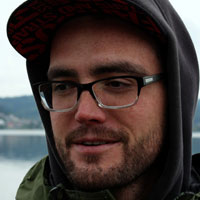
Dr. Daniel Goll (LSCE-UVSQ)
daniel.goll@lsce.ipsl.frDevelopment and application of the dynamic global vegetation model ORCHIDEE. The model simulates cycles of carbon, nitrogen and phosphorus across multiple spatial and temporal scales. The aim is to advance the understanding of the biogeochemical cycles and their interactions with the climate system.

Dr. Bertrand Guenet (LSCE-UVSQ)
bertrand.guenet@lsce.ipsl.frDuring the P-Imbalance project I will improve the soil scheme of the land surface model ORCHIDEE to better represent the P cycle in the soil. First, I 'll be in charge of the merge between the different versions which need to be associated for the project. Then I will co supervise the post doc and the Ph. D student who will devellop the weathering and the explicit representation of soil microorganisms. Finally, I will participate to the evaluation of the new version of ORCHIDEE including nitrogen and phosphorous cycle.
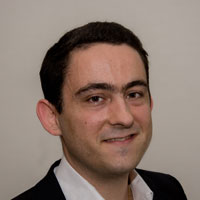
Dr. Matthieu Guimberteau (LSCE-UVSQ)
matthieu.guimberteau@upmc.frWater and carbon cycles modeling with ORCHIDEE and systematic validations for different versions of the model.
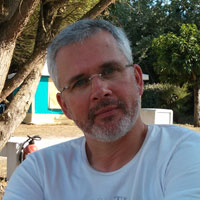
Dr. Didier Hauglustaine (LSCE-UVSQ)
didier.hauglustaine@lsce.ipsl.frAtm N cycle with LMDZ INCA model
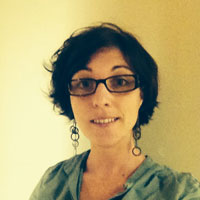
Emilie Joetzjer (LSCE-UVSQ)
emilie.joetzjer@gmail.comMy research focuses on understanding the carbon and water cycle in tropicalforest. During my post doctoral fellowship at Montana State University, I will work with B Poulter to better account for tropical forest "diversity" in the ORCHIDEE/DOFOCO (ORCHIDEE-CAN) Dynamic global vegetation model through the incorporation of plant functional types based on different traits, related to drought tolerance or resistance, phosphorus and nitrogen economy. Strong collaborations with the Imbalance-P field experiments and model developments are planned.

Dr. Fabienne Maignan (LSCE-UVSQ)
fabienne.maignan@lsce.ipsl.frLSCE technical manager for the ORCHIDEE model (code management, versioning, validation, evaluation at global scale), in collaboration with M. Gimberteau.

Nicolas Najdovski (LSCE & Montana State University)
nicolas.najdovski@msu.montana.eduMy research focus on modeling the tropical forest carbon stocks and stand structure and how human activities impact them using ORCHIDEE-CAN.
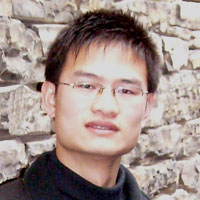
Dr. Shushi Peng (LSCE-UVSQ)
Shushi.Peng@lsce.ipsl.frGenerally, carbon cycle, nitrogen cycle and phosphorus cycle are full coupled in nature, apart from other biogeochemical cycles. However, these biogeochemical cycles have not been coupled in our land surface model yet. I am interested in modeling phosphorus cycle in land surface model (ORCHIDEE), and testing hypotheses about feedbacks of these coupled biogeochemical cycles on climate.

Dr. Aurélie Violette (LSCE-UVSQ)
Aurelie.Violette@lsce.ipsl.frThe geochemical model WITCH calculates mineral weathering fluxes and the corresponding chemistry of the soil solution. The coupling of ORCHIDEE and WITCH models will enable to investigate the mineralogical P production by weathering and its feedback to the vegetation cycle.
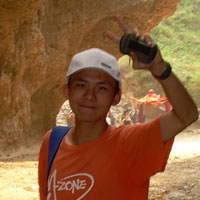
Dr. Rong Wang (LSCE-UVSQ)
rong.wang@lsce.ipsl.frOur group (LSCE) have estimated the global budget of phosphorus (P) in the atmosphere by quantifying various sources of P with the uncertainties quantified. Using a new approach based upon the mass balance of P, the emissions of P from biomass and fossil fuel combustion were estimated, which were higher than all previous estimates due to inclusion of P emitted in all phases and particle sizes. As a result, a near closure of the P budget was achieved in the atmosphere.


Dr. Yi Yin (LSCE-UVSQ)
yi.yin@lsce.ipsl.frP mobility in soil to the root uptake is one of the limiting factors for plant use, alongside with P mineralization by microbes and fungi. Thus, for modeling the uptake of P by plants, the processes of P diffusion and sorption need to be considered. I will work on a simple process based 1-D root uptake sub-model in the soil water transport of ORCHIDEE and also dynamic root growth to coupe with the vertical transport.
